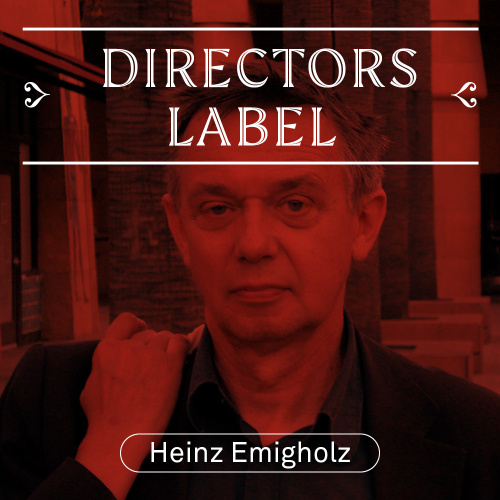
Two Basilicas
GER 2018, 36 min
The Grundtvigs Church (1913-1940) in Copenhagen, designed by Peder Vilhelm Jensen-Klint and built by six master bricklayer and their assistants in the period of 27 years, and the Cattedrale di Santa Maria Assunta (1290-1591) in Orvieto, planned and executed by many master masons and craftsmen in the period of 300 years.
Synopsis
A confrontation and comparison of two church buildings, which could hardly be more different, but also a dialogue between various concepts of church and community: the Protestant Grundtvig’s Church in Copenhagen and the Catholic Cathedral in Orvieto. The cathedral in the central square in the middle of the city of Orvieto, with its visual histories in the interior and on the facade, and the imposing brick building of the church on the edges of Copenhagen, which forms the center of a housing complex of like-minded persons. Both radiate into their surroundings, the cathedral from great heights into the mountains around, the church itself like a rock in the flat land. The cathedral as a community achievement of great craftsmanship and the church like a strictly constructed dogma. Horizontal meets vertical, north meets south, mysticism meets joie de vivre, Protestantism meets Catholicism, clarity meets complexity, however they are distributed when it is a matter of the ideology of holy sites and the reflection and contemplation made possible inside them: the beauty of craftsmanship and political intentions.
Streaming-Info
Rent or buy the movie on our Vimeo channel.
Language: No dialogue
Film kaufen
VOD
451-Vimeo
DVD
451-Alive Shop
amazon
Awards and Festivals
- Berlinale Forum Expanded, 2018
- Cinéma du réel - Centre Pompidou Paris, 2018
- Hong Kong International Film Festival, 2018
- BDA – Filmforum Bremen, 2018
- Subversive Festival Zagreb, 2018
- Jeonju International Film Festival, 2018
- The Copenhagen Architecture Festival, 2018
- Viennale – Vienna International Film Festival, 2018
- Milano Design Festival, 2018
- Mar del Plata, 2018
Additional Texts
The building of the two basilicas
by Thomas Bo Jensen
In the year 1263, a miracle apparently happened in the Santa Christina church of Bolsena, province of Terni in Italy. A piece of altar bread began to bleed onto the corporal (small tablecloth), upon which the plate and chalice rested. The appearance of blood on the corporal, that even reminded of the profile of Jesus Christ, was read as a miracle, affirming the Roman Catholic doctrine of transubstantiation. Under the orders of Pope Urban IV, a basilica to host the sacred corporal was planned to be built in nearby Orvieto, located on a volcanic plug that offered prominence and natural protection. Under the lead of master builder Fra Bevignato de Perugia, blocks of white travertine and black basalt was brought to the plug and, layer by layer, stacked in alternative rows. Three hundred years of continuous struggle passed by, while the pattern from the Sienese Gothic style, that was laid out by Fra Bevignato’s followers Giovanni di Uguccione and Lorenzo Maitani at the entrance of 14th century, was followed meticulously by the generations to follow. Superior master builders, stone cutters, wood carvers and painters where brought in from Florence and Siena, providing Santa Maria Assunta an abundance of wondrous art, like the woodwork of Giovanni Ammanati, Signorelli’s antichrist wall paintings or the mysterious luminous alabaster windows. Or like the spectacular western façade, with its myriads of sculptures, bas-reliefs and glazed mosaics, that glitters like a crystalline ocean of unbelievable depth.
In the year 1913, the engineer and master builder P.V. Jensen-Klint envisioned a grand cathedral, made out of one single material: yellow bricks. In fact, millions of them. Officially, a tribute to the poet and clergyman N.F.S. Grundtvig; in reality, a late celebration of the spirit of gothic architecture. P.V. Jensen-Klint described Grundtvigs Church as a blown-up version of a typical Danish village church. He also spoke of it as a cluster of old church towers, joint together like a giant “Crystal Knot”. Jensen-Klint was fascinated by the imposing cathedrals of central Europe, dreaming that one day he would be able to build such a structure on Danish ground. But up here, he pondered, we have no stones, no marble, only chalk and clay. Thus from 1921, thousands of tiny yellow bricks were brought to Bispebjerg (bishops mountain) in the outskirts of Copenhagen. For six years, only six trained masons worked on the tripartite western tower. More than 700 layers of bricks, carefully stacked according to the niches, corbels and crannies that Jensen-Klint had designed, grew up like a crystalline mountain of burnt clay. The exterior wild and fierce, almost threatening, the interior smooth like a carefully hollowed cave. Or like a softly whistling conch, sending secret messages from a long gone past – the voices still echoing beneath the endlessly repeated vaults.
The two Basilicas are similar by typology, but highly different by atmosphere. They share the same cultural archetype deep down history, but the associations and imaginations they stimulate, are dispersed in multiple directions. Southern and northern, Catholicism and Protestantism, colourful and ascetic, warm and stern. We know the differences by intellect, but in these magnificent spaces, our minds are lead in countless unforeseen directions, triggered by the tiniest details or the elaborate material and spatial complexities, that still leaves us wondering.
Watch Movie
VOD
451-Vimeo
DVD
451-Alive Shop
amazon
Credits
Director
Heinz Emigholz
Idea and Conzept
Heinz Emigholz, Thomas Bo Jensen
Director of Photography and Editor
Heinz Emigholz, Till Beckmann
Sound and Postproduction
Till Beckmann
Sound Design and Sound Mixer
Jochen Jezussek, Christian Obermaier
Producers
Thomas Bo Jensen, Heinz Emigholz
Produced by
Heinz Emigholz Filmproduktion
Founded by
Danish Arts Foundation, Beckett-Fonden, Dreyers Fond and Aarhus School of Architecture
DVD-Details
Released on the DVD DIESTE [Uruguay]
Distribution Details
Screening Format
DCP (2K & 4K, 25 fps, 5.1)
Blu-ray Disc
Aspect Ratio
16:9
Language
International Version (no dialogue)
Promotion Material
Poster (Print-Pdf)
License Area
Worldwide




